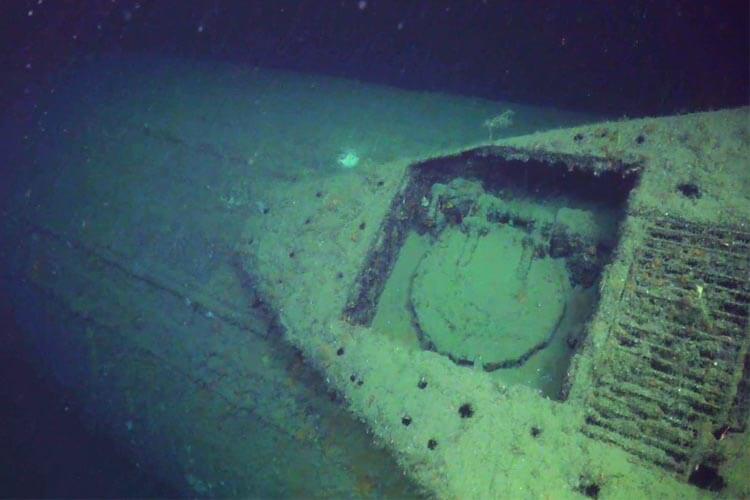
The wreckage of a Second World War British submarine, HMS Thistle, has been located in its North Sea resting place by a team of Norwegian researchers.
HMS Thistle was sunk on 10 April 1940 – just a few months after her maiden voyage – by a torpedo fired from the German submarine, U-4. The two vessels had been involved in a game of cat-and-mouse since the previous day, after Thistle opened fire on U-4, but missed.
Thistle was caught by U-4 at the surface in the early hours of 10 April and – unable to evade the German submarine’s torpedoes – was sunk near Skudeneshaven, Norway with the loss of all 53 hands.
Related stories
Eighty-three years later, researchers from Norway’s Institute of Marine Research (IMR) and the MAREANO programme – a cooperative initiative by the IMR, the Geological Survey of Norway (NGU) and the Norwegian Mapping Authority – which has been mapping the topography, composition and biodiversity of Norway’s waters since 2006.
The submarine was first located during an expedition in the Spring of 2023, after the MAREANO scientists spotted some unusual shapes on the seabed map they were using to plan the voyage. Remotely operated deep-sea camera drones identified the structure as that of a submarine, but the unanswered question was: which one?
Searching the historical records, senior MAREANO engineer, Kjell Bakkeplass, discovered that there were two British vessels known to have been lost in the waters off the western Norwegian county of Rogaland – HMS Thistle, and a second submarine, HMS Oxley.

HMS Oxley was the first Royal Navy vessel to become a casualty of the Second World War, just a week into the conflict in 1939. She was sunk by friendly fire, after straying into the path of another British submarine, HMS Triton, which opened fire after Oxley repeatedly failed to respond to signals.
‘Based on the photos, it was established that it was a British submarine, and available information could indicate that the wreck of HMS Oxley was closest,’ said Bakkeplass, after the first close-up inspection of the wreckage.
‘[However], after several people had studied the photo,’ Bakkeplass continued, ‘we concluded that it was probably HMS Thistle, but the photo showed too few details for it to be conclusively settled.’

An opportunity to visit the wreck arose in October as the MAREANO team were due to pass the site on the way to an inspection of the sea floor in the Skagerrak strait, situated between Norway, Sweden and Denmark’s Jutland peninsula.
Using the wreck site as a test bed for their equipment and armed with pre-prepared knowledge of structural design features that would help to identify the vessel, expedition leader Kyrre Heldal Kartveit said: ‘we were able to identify the wreck as [HMS] Thistle, but with a small caveat that it is the Royal Navy who is responsible for the final identification.’
Although conclusive proof of the sunken submarine’s identity could not be confirmed absolutely, a spokesperson for the British Royal Navy said that the vessel was ‘likely’ to be HMS Thistle.

‘Having analysed the information available, we can now confirm that the wreck is a T- Class submarine from Group 1,’ said the spokesperson.
‘There is insufficient evidence to determine precisely which T Class submarine it could be, however, as there are no other known submarine wrecks in the vicinity, the Ministry of Defence considers that based on the available information, the wreck is likely to be that of HMS Thistle (N24).
‘Irrespective of this,’ added the Royal Navy representative, ‘it is the last resting place of personnel onboard who died, and we request that the vessel is left undisturbed.’
- UK swimmers warned to keep clear of Reggie the dancing dolphin - 20 August 2025
- DIVE’s Big Shot Patterns & Textures – win an Aggressor Adventures liveaboard trip - 19 August 2025
- New Scottish MPAs protecting Scapa Flow and Queen of Sweden wreck - 14 August 2025


